#black cohosh
Explore tagged Tumblr posts
Text
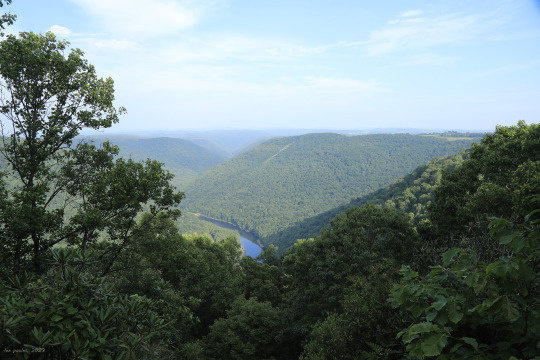

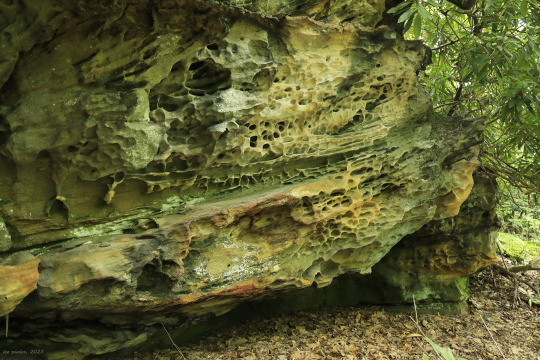

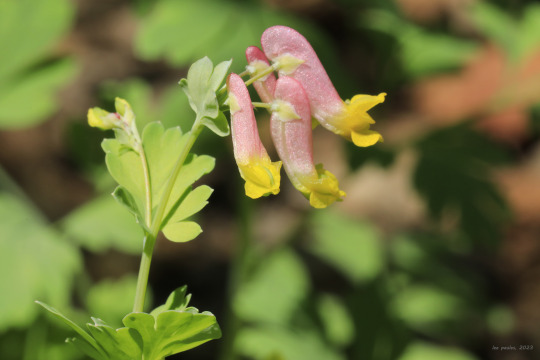
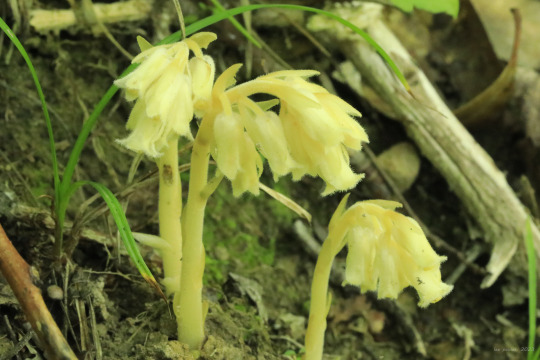


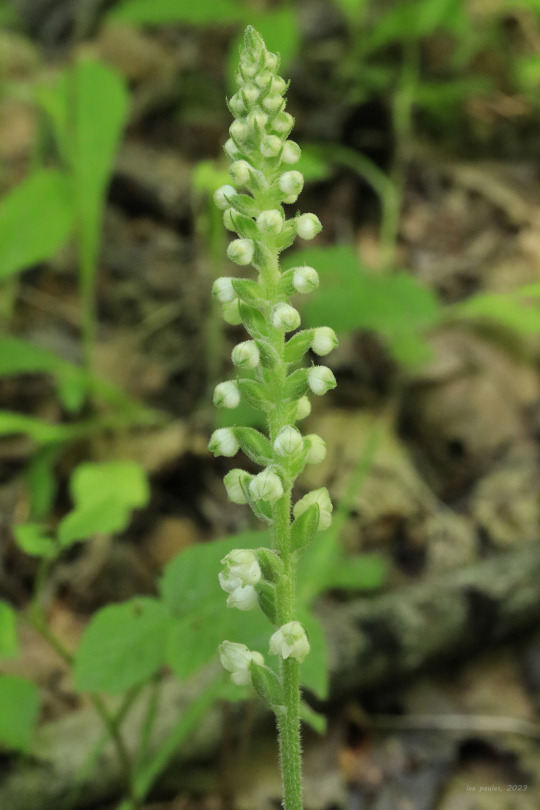
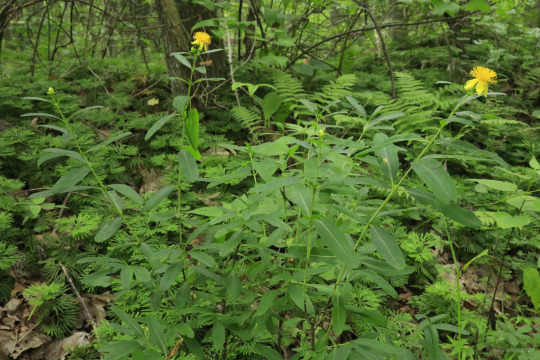







A hike in the Cheat River Canyon on a hazy, mid-summer day brings a great many rewards, both large and small.
From top: Fractured and pitted sandstone gives testimony to the canyon's ancient struggle with the elements; black cohosh (Actaea racemosa or Cimicifuga racemosa), whose towering flower spikes stalk the old woods like magical beings; the colorful rock harlequin (Corydalis sempervirens), an endangered fumitory that haunts the canyon's rocky outcrops; pinesap (Monotropa hypopitys), a parasitic plant closely related to Indian pipe; spotted St. John's wort (Hypericum punctatum), which is distinguished from the invasive St John's wort (Hypericum perforatum) by the numerous black dots on its flowers and leaves; downy rattlesnake plantain (Goodyera pubescens), a shade-tolerant terrestrial orchid that favors oak-hickory woods; shrubby St. John's wort (Hypericum prolificum), a mounding, deciduous shrub of open, sandy woods; orange-fringed orchid (Platanthera ciliaris), a stunning late summer beauty of Appalachia's moist meadows and open woods; a hummingbird clearwing moth (Hemaris thysbe) visiting a late-blooming milkweed; a silvery checkerspot (Chlosyne nycteis) drinking up the nectar of a butterfly milkweed (Asclepias tuberosa); an American green crab spider (Misumessus oblongus) stalking a black-eyed Susan for its next meal; a large milkweed bug (Oncopeltus fasciatus) being perfectly beautiful on a lazy summer day; and last but not least, a hulking patch of eastern Jack-0'-lanterns (Omphalotus illudens), which contrary to what field guides say have never glowed in the dark for me (I love the toxic little beauties nonetheless).

#appalachia#vandalia#west virginia#wildflowers#flora#summer#snake hill wildlife management area#cheat river canyon#chestnut ridge#fungi#insects#orchids#black cohosh#rock harlequin#pinesap#spotted st. john's wort#downy rattlesnake plantain#shrubby st. john's wort#orange-fringed orchid#hummingbird clearwing moth#silvery checkerspot#butterfly milkweed#american green crab spider#large milkweed bug#jack o' lantern#lepidoptera
174 notes
·
View notes
Text

Actaea racemosa / Black Cohosh at the Sarah P. Duke Gardens at Duke University in Durham, NC
#Actaea racemosa#Actaea#Cimicifuga#Cimicifuga racemosa#ranunculaceae#Black Cohosh#Black bugbane#Black Snakeroot#Fairy candle#Native plants#Native flowers#Plants#Flowers#Wildflowers#Nature photography#photography#photographers on tumblr#Sarah P. Duke Gardens#Duke Gardens#Duke University#Durham#Durham NC#North Carolina#🌺🌻
11 notes
·
View notes
Text
For the past few months I've been experimenting with using black cohosh to enable healthily having 0 estrogen and 0 testosterone (i.e. eunuch or castrate levels) and I wanna share the results! It was pretty promising so I think this could be cool as a new biological sex that people could transition to
#transgender#trans#hrt#diy hrt#trans diy#hormone replacement therapy#black cohosh#trans resources#lacunaposting
10 notes
·
View notes
Text

Black cohosh (Actaea racemosa)
5 notes
·
View notes
Text

Black Cohosh in a Bramble Patch
#love this plant some people call it fairy wands#nature#original phography#photographers on tumblr#forest#black cohosh#njlocal#summer
16 notes
·
View notes
Text

Black Cohosh
-Common Sense Medical Adviser 1895
17 notes
·
View notes
Text
I Get This ONE Question ALL The Time
🌿 **Herbal Spotlight: Black Cohosh (Cimicifuga or Actaea racemosa)** 🌿 For all cycles of life, Nature offers remedies steeped in wisdom and tradition. Black Cohosh is the NUMBER ONE most talked about herb when it comes to perimenopause. For those who’re hesitant to use HRT (prescription estrogen therapy), or for those looking to treat their symptoms in a more natural way, herbal medicine can be…
#black cohosh#Cambridge#Health#herbal medicine#Kitchener#naturopath#naturopathic doctor#Naturopathic Medicine
0 notes
Text
The Ultimate Guide to Black Cohosh: Unlocking its Powerful Health Benefits

Black cohosh is a natural plant that has been used for millennia to promote women's health and alleviate menopausal symptoms. It is native to North America and has been used by Native Americans for therapeutic purposes, primarily to relieve hot flashes, mood swings, and menstrual cramps. Recent studies have indicated that black cohosh possesses immune-stimulating, antioxidant, and anti-inflammatory properties.
Black cohosh has been used for millennia by Native Americans to cure a range of diseases. When European immigrants arrived in North America, they began utilizing black cohosh to treat menopausal symptoms. It has traditionally been used to treat rheumatism and mental disorders.
Black cohosh's health advantages stem from its chemical composition. Active substances like triterpene glycosides, flavonoids, phenolic acids, and tannins work synergistically to promote health and alleviate discomfort. Triterpene glycosides have anti-inflammatory properties and interact with the body's estrogen receptors, making black cohosh useful for arthritis and menopausal symptoms.
0 notes
Text
instagram
#Instagram#mona caron#cohosh#cimifuga#cimifugaracemosa#wilplant#medicinalplants#wildflowers#originallandscape#urbanmacroherbarium#weeds#mural#muralart#commission#courtyard#monacaron#muralcommission#cimicifuga racemosa#black cohosh#Actaea racemosa#black bugbane#black snakeroot#rattle-top#fairy candle
0 notes
Text

From Seven Herbs: Plants as Teachers by Matthew Wood
#herbalism#botany#plants#plant medicine#black cohosh#teachers#education#holistic#health#magic#alchemy#chemistry#plant#plant life#plant lover#herbs#herb#study#Bible#Matthew wood
0 notes
Video
youtube
Missed Miscarriage 2023
#youtube#Missed Miscarriage 2023#Icelyn Odette#Missed Miscarriage#Miscarriage#Pregnant#Prenancy#Black Cohosh#Blue Cohosh#Missed Miscarriage Information#Missed Miscarriage Story#Missed Miscarriage Experience#Missed Miscarriage Video
0 notes
Text



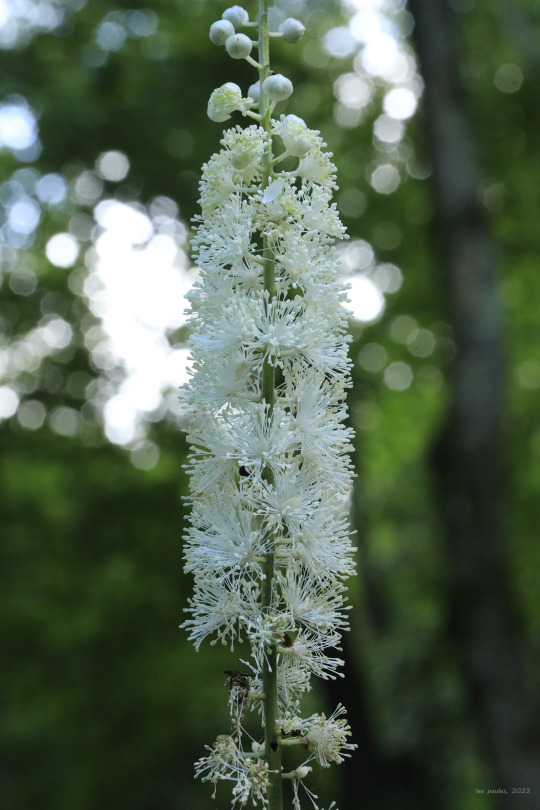
I suppose if any wildflower can be said to embody the bounty and energy of summer, it must be black cohosh (Cimicifuga racemosa, or Actaea racemosa). Anyone who has grown up in Central Appalachia will instantly recognize and connect with the towering "fairy candles" of this woods-dwelling perennial in the buttercup family - some might even suggest a spiritual bond exists between the people of the mountains and the plant. This isn't surprising - black cohosh has a long and storied history as a medicinal herb, dating back to the Native American tribes, who used an extract from its root to treat everything from musculoskeletal pain to snake bites, and continuing with the European settlers, who used it to treat the symptoms of menopause. While there is little evidence from clinical trials indicating the plant's efficacy in treating menopausal symptoms, higher quality studies are being urged and may yet prove the plant's value in supporting female reproductive health. Irrespective of its potential contributions to medicine, black cohosh is the living spirit of Appalachia's summer woods, and one of the most spectacular wildflowers of North America.
#appalachia#vandalia#west virginia#wildflowers#flora#summer#favorite summer wildflowers#traditional medicine#herbal medicine#herbal remedies#black cohosh#fairy candles#black bugbane#black snakeroot#snake hill wildlife management area#cheat river canyon
143 notes
·
View notes
Text






Digging through some old forges. Dimitri just being a little silly with his cat Cohosh.
2 notes
·
View notes
Text
Breaking: Girlie Doesn't Take Typical Medicine, Experiences Symptoms
#its okay im gonna live#it's gonna be fine#(affirmations voice) i will not run out of black cohosh again#why does estrogen control so many things :((#p
5 notes
·
View notes
Text
"Despite the Central Appalachia ecosystem being historically famous as coal country, under this diverse broadleaf canopy lies a rich, biodiverse world of native plants helping to fill North America’s medicinal herb cabinet.
And it turns out that the very communities once reliant on the coalfields are now bringing this botanical diversity to the country.
“Many different Appalachian people, stretching from pre-colonization to today, have tended, harvested, sold, and used a vast number of forest botanicals like American ginseng, ramps, black cohosh, and goldenseal,” said Shannon Bell, Virginia Tech professor in the Dept. of Sociology. “These plants have long been integral to many Appalachians’ livelihoods and traditions.”
50% of the medicinal herbs, roots, and barks in the North American herbal supply chain are native to the Appalachian Mountains, and the bulk of these species are harvested or grown in Central Appalachia, which includes southern West Virginia, eastern Kentucky, far-southwest Virginia, and east Tennessee.
The United Plant Savers, a nonprofit with a focus on native medicinal plants and their habitats, has identified many of the most popular forest medicinals as species of concern due to their declining populations.
Along with the herbal supply chain being largely native to Appalachia, the herb gatherers themselves are also native [to Appalachia, not Native American specifically], but because processing into medicine and seasonings takes place outside the region, the majority of the profits from the industry do too.
In a press release on Bell’s superb research and advocacy work within Appalachia’s botanical communities, she refers back to the moment that her interest in the industry and the region sprouted; when like many of us, she was out in a nearby woods waiting out the pandemic.
“My family and I spent a lot of time in the woods behind our house during quarantine,” Bell said. “We observed the emergence of all the spring ephemerals in the forest understory – hepatica, spring beauty, bloodroot, trillium, mayapple. I came to appreciate the importance of the region’s botanical biodiversity more than ever, and realized I wanted to incorporate this new part of my life into my research.”
With co-investigator, John Munsell at VA Tech’s College of Natural Resources and Environment, Bell’s project sought to identify ways that Central Appalachian communities could retain more of the profits from the herbal industry while simultaneously ensuring that populations of at-risk forest botanicals not only survive, but thrive and expand in the region.
Bell conducted participant observation and interviews with wild harvesters and is currently working on a mail survey with local herb buyers. She also piloted a ginseng seed distribution program, and helped a wild harvester write a grant proposal to start a forest farm.
“Economic development in post-coal communities often focuses on other types of energy development, like fracking and natural gas pipelines, or on building prisons and landfills. Central Appalachia is one of the most biodiverse places on the planet. I think that placing a greater value on this biodiversity is key to promoting a more sustainable future for the region,” Bell told VA Tech press.
Armed with a planning grant of nearly half a million dollars, Bell and collaborators are specifically targeting forest farming as a way to achieve that sustainable future.
Finally, enlisting support from the nonprofit organization Appalachian Sustainable Development, Virginia Tech, the City of Norton, a sculpture artist team, and various forest botanicals practitioners in her rolodex, Bell organized the creation of a ‘living monument’ along Flag Rock Recreation Area in Norton, Virginia.
An interpretive trail, the monument tells the story of the historic uses that these wild botanicals had for the various societies that have inhabited Appalachia, and the contemporary value they still hold for people today."
-via Good News Network, September 12, 2024
#appalachia#united states#biodiversity#herbs#herbal medicine#herbalism#native plants#conservation#sustainability#sustainable agriculture#solarpunk#good news#hope
642 notes
·
View notes
Photo
[ID: Herbs for Menstruation:
Red Raspberry Leaf: Rich in calcium and other minerals and vitamins, red raspberry leaf is a gentle but powerful uterine tonic that can be taken regularly as a tea or infusion to help strengthen the endocrine system and balance hormones that aid in menstruation. The astringent nature of raspberry leaf is helpful for relieving diarrhea.
Catnip: a boon to digestive woes and the upset and bloated stomach. A calming pungent and bitter herb that also works as an antispasmodic. Enjoy as a tea or infusion mixed with less bitter herbs.
Ginger: Ginger supports digestion, heart health, immunity, and reproductive health. The warming, stimulating, and antispasmodic plant is helpful for menstrual cramps and painful ovulation. Use in food, tea, infused honey, oil, and tincture.
Motherwort: Also knows as “mother’s herb.” Tonic for blood, heart, and womb. Tincture works great as PMS ally. Nervine to help with mood and Antispasmodic to help with cramping and improve circulation.
Cramp bark: Warming and cooling in nature, this bitter herb can be taken as a tincture, capsule, or decoction. Great for lower back pain, uterine spasms and muscle pain.
Rose: This relaxing and sweet smelling herb is relaxing and soothing while helping to harmonize blood, break up stagnation, ease breast tenderness, menstrual pain, belching, and improve appetite. Enjoy as food, tea, glycerite, infused oil, syrup, and tincture.
Nettle: Nutritive powerhouse full of vitamins and minerals including iron and silica. Great for nourishing the blood and balancing anemia. Enjoy as a tea, infusion, oxymel, and tincture.
End ID.]

✨HERBS FOR MENSTRUATION✨I’m SO excited to share this collaboration with the lovely @thehillbillyafrican , writer, herbalist, and practicing doula. Farai has a wealth wisdom to share from baby wearing to down-to-earth eco consciousness. I’ve always admired her realness and practicality when it comes to incorporating herbalism and sustainable mindsets in her own work. She provided all of the written work for this poster, while I worked on the illustrations. Herbs for Menstruation will be available as a print on my Etsy, however the downloadable version will be at her Patreon (link is in Farai’s and my bio). A few other downloadable goodies will be available on her Patreon as well, so it’s definitely worth checking out! . . Herbs provide powerful, tonifying, and nourishing support during and leading up to menstruation. Along with rest, eating nourishing foods, drinks, and gentle self care like face steams, warm rice packs, foot baths, and baths are great ways to support the body. Herbs can be included in all of these practices. From including them in your foods as culinary spices to adding them to your drinks in the forms of infusions, teas, drinking vinegars. You can also sew the herbs like rose into rice packs for the added aromatherapy boost. Take caution, do your own research, consult with your health care provider, and use your own discrection before you begin to use these herbs. Especially if you are on pharmaceuticals, pregnant, or lactating. The information shared is not FDA approved and does not constitute medical advice. It is sourced from folk-lore, personal experience, general scientific research, and oral history and learning.
#I'm going to add turmeric (specifically paired with black peppercorns and ginger). pretty sure it regulated my cycle#and black cohosh for pms/pmdd#menstruation#periods#image described
379 notes
·
View notes